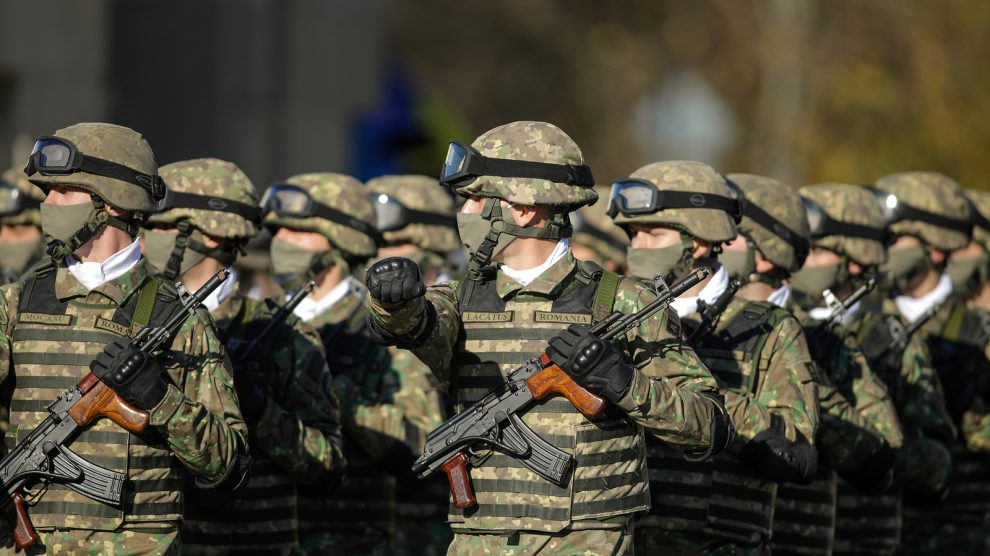Both South Korea and Romania have the potential to be much more than standard-issue offshore balancers. They can serve as power-projection transmission channels as well as leveraging domestic know-how to act as regional leaders.
In foreign policy, realism is a fairly loose, catch-all term used to describe a geopolitical strategy and perspective where nations focus on power projection beyond their immediate borders as aligned with a set of perceived state interests.
In the case of the United States, this traditionally translates into a Neo-Mahanian focus on sea lanes and chokepoints which could yield significant leverage in international relations, particularly in terms of economic security and military deterrence.
- Eastern Europe’s new diagonal, with ASEAN and the Gulf
- Reimagining Central and Eastern Europe’s future development through the Three Seas Initiative
- Once considered peripheral, CEE has become integral to the EU’s economic wellbeing
For example, controlling or influencing vital maritime chokepoints such as the Straits of Hormuz or the South China Sea can provide a country with strategic advantages, including the ability to secure energy supplies or disrupt a state adversary’s trade routes.
Thus, offshore realism often requires a straightforward mix of hard power, in the form of military presence and capabilities, and soft power, through diplomacy and economic engagement.
In the US context, it underpinned and acted as a somewhat misguided basis for the focus on air-power superiority, drawing on lessons learned in the first Gulf War on network-centric warfare.
However, while the maximalist propensity implied in such a grand strategy is self-evident, the general opposition to it comes from outside of the provider of the world’s reserve currency, where it is, some would argue, a straightforward recipe for state bankruptcy.
Furthermore, given long-term projections for the US budget deficit, a significant part of this school of thought went the way of offshore balancing.
Offshore balancing
Offshore balancing is an adapted re-iteration of boilerplate British policy towards continental Europe during the 1800s that advocates for a great power to minimise its direct involvement in distant regions, instead relying on local powers to maintain a balance of power that aligns with its interests.
This strategy is based on the idea that a dominant power should avoid fiscally and logistically overextending itself by getting entangled in conflicts and issues far from its borders.
Instead, it should encourage and support regional powers to take the lead in managing security and stability in their respective areas, using hard power projection directly only when absolutely necessary to prevent any one power from becoming too dominant.
Instead, offshore balancing relies heavily on the strategic use of diplomacy and alliances. The great power employing the general strategy aims to foster relationships with key regional actors, offering support in the form of arms sales, intelligence sharing, or economic aid, to ensure that these actors can effectively counterbalance any potential threats in their region, at least in line with the balancing power’s interest.
Intrinsic difference, positional similarity
South Korea and Romania, while geographically, economically, and culturally distinct, share some similarities of military contexts in terms of their wider geopolitical position as natural offshore balancers.
Both countries face the influence of larger, potentially adversarial neighbours. South Korea is in close proximity to North Korea, a persistent threat with its nuclear capabilities and aggressive posturing. Similarly, Romania is situated near Russia, whose recent actions in Ukraine and military presence in Eastern Europe have raised concerns among NATO members.
These regional dynamics have pushed both South Korea and Romania to prioritise national defence and align closely with powerful military alliances—the United States for South Korea and NATO for Romania.
In terms of military modernisation, both nations have undertaken significant efforts to enhance their capabilities. South Korea has invested heavily in advanced technologies, including missile defence systems, stealth aircraft, and cyber warfare capabilities, to maintain a technological edge over North Korea.
Romania, on the other hand, has been upgrading its military to meet NATO standards, purchasing advanced equipment such as the Patriot missile defence system or K9 mobile artillery and modernising its air and naval forces.
Another similarity lies in defence policies. Both South Korea and Romania emphasise a strong alliance with the United States as a cornerstone of their security strategies. South Korea hosts US military bases, and the US-South Korea alliance is pivotal in deterring North Korean aggression.
Romania, as a NATO member, benefits from the collective security guarantee provided by the alliance, and it hosts US missile defence elements as part of its strategic partnership with Washington.
In other words, both South Korea and Romania have the potential to be much more than standard-issue offshore balancers. They can serve as power-projection transmission channels which can further use internal resources to project power and act to create their own balancers, their own networks of state and non-state actors, as well as leveraging domestic know-how to act as regional leaders.
Unlike many news and information platforms, Emerging Europe is free to read, and always will be. There is no paywall here. We are independent, not affiliated with nor representing any political party or business organisation. We want the very best for emerging Europe, nothing more, nothing less. Your support will help us continue to spread the word about this amazing region.
You can contribute here. Thank you.



Add Comment